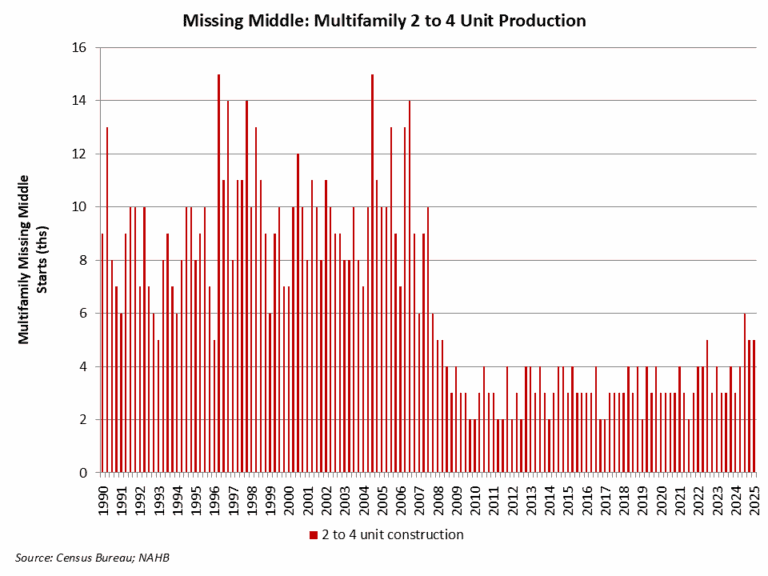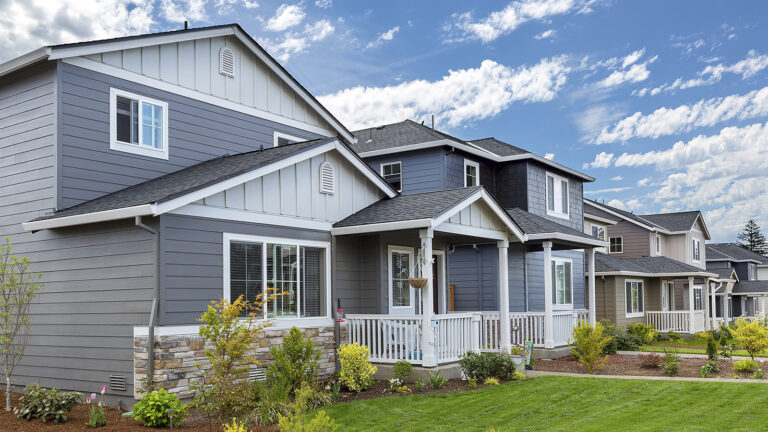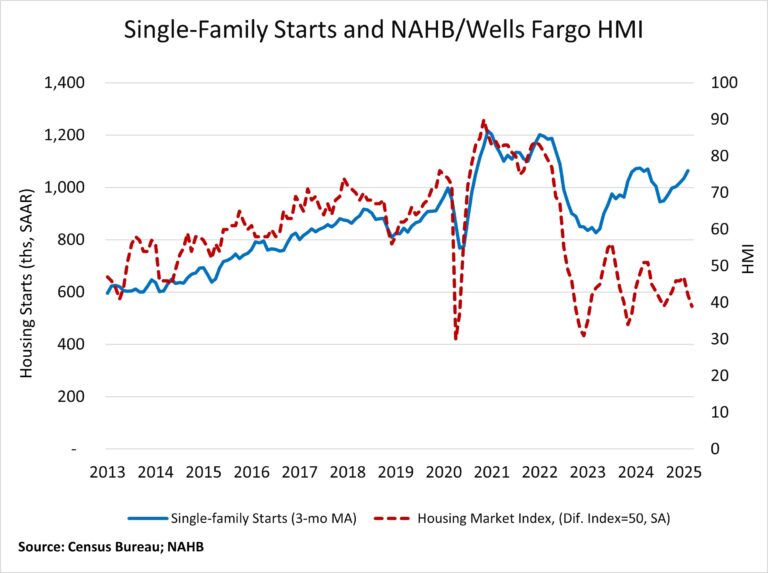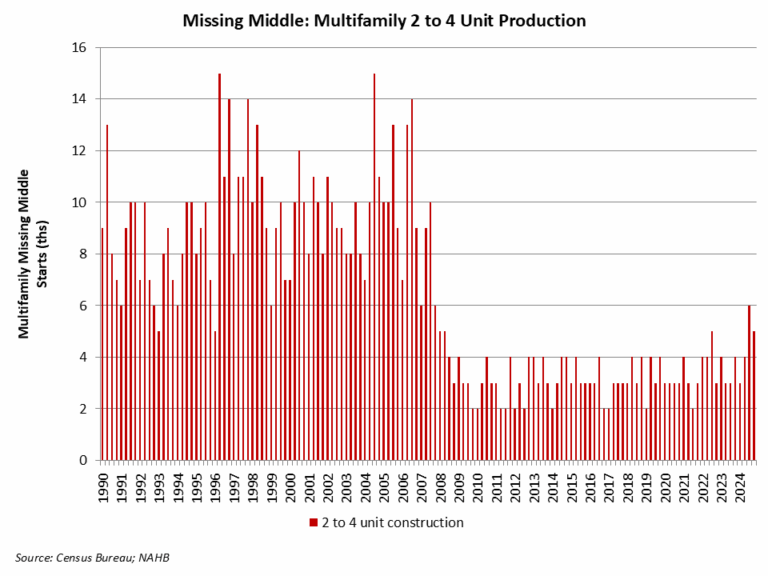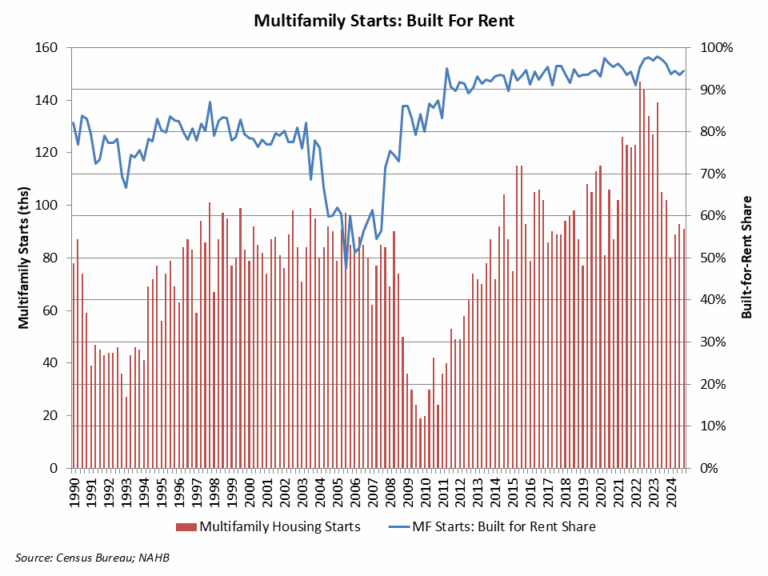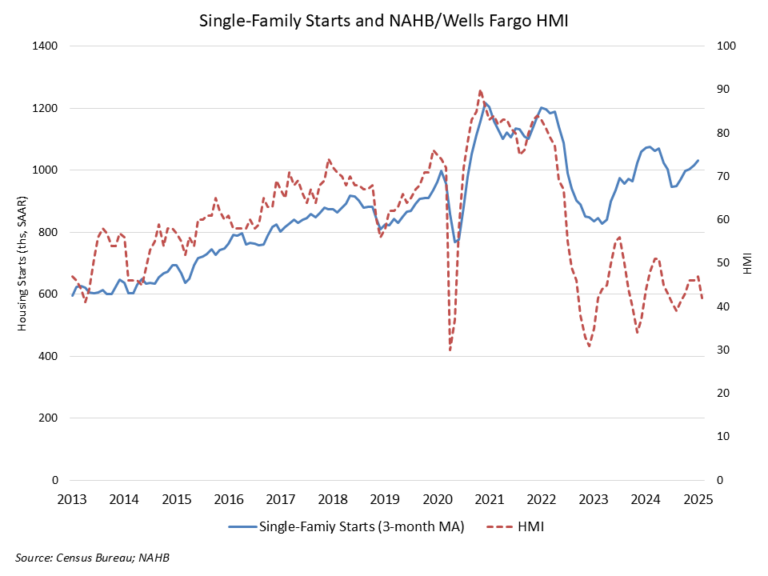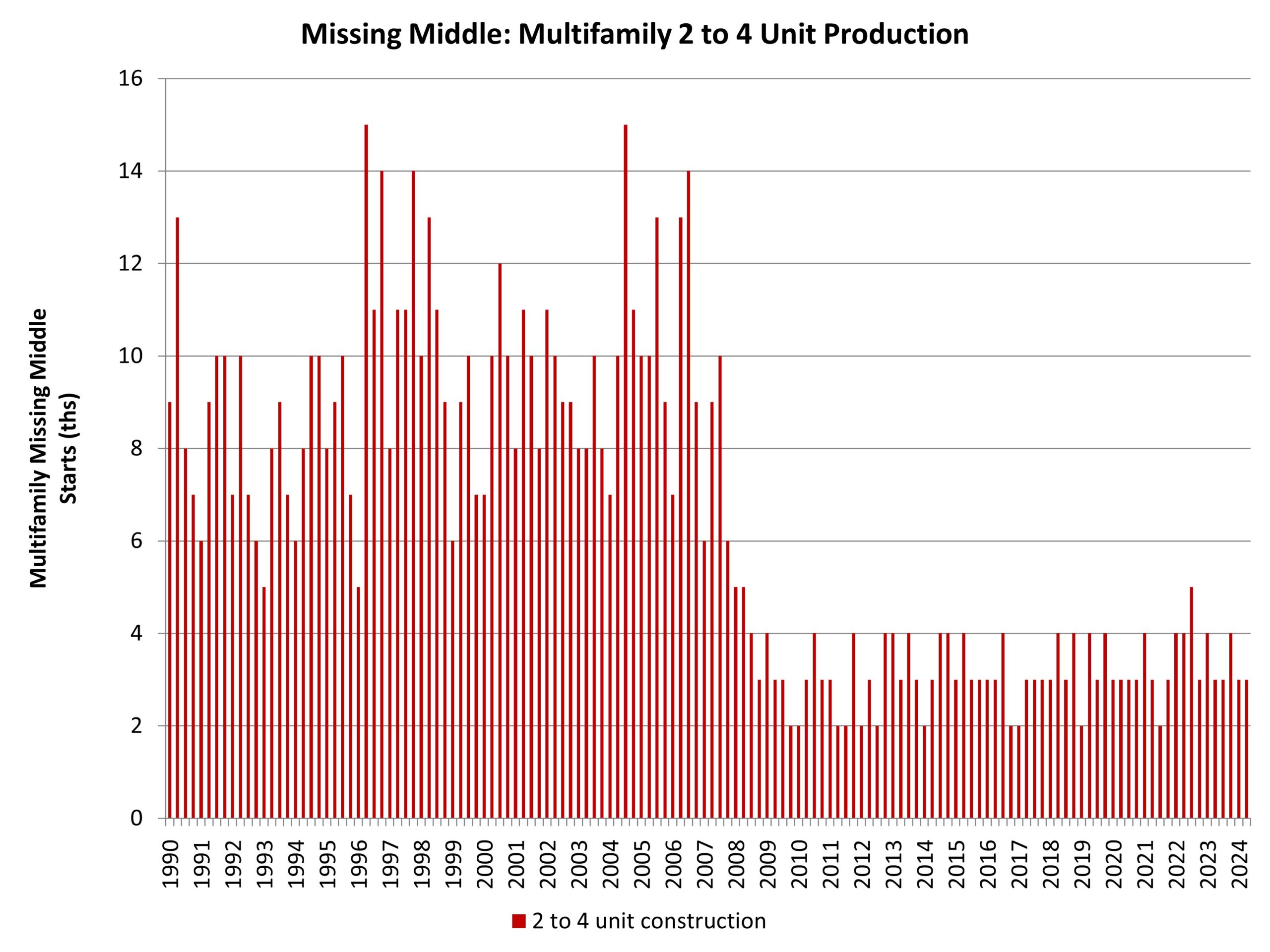Multifamily developers are starting the year in a cautious state, according to Q1 2025 results from the Multifamily Market Survey (MMS) released today by the National Association of Home Builders (NAHB). The MMS produces two separate indices. The Multifamily Production Index (MPI) decreased three points to 44 year-over-year, marking the seventh consecutive quarter below the break-even point of 50. The Multifamily Occupancy Index (MOI) had a reading of 82, slightly lower than the 83 reading it recorded in the first quarter of 2024.
The current MPI reading is consistent with NAHB’s forecast for a modest decline in the rate of multifamily production for the remainder of 2025, followed by a modest recovery in 2026. Multifamily builders and developers continue to experience major headwinds from rising construction costs, regulatory barriers, and availability of financing.
Like remodelers and single-family builders, multifamily developers are also being affected by economic policy uncertainty. In this quarter’s MMS, more than half of the developers reported that their suppliers have increased prices due to announced, enacted or anticipated tariffs.
Multifamily Production Index (MPI)
The MMS asks multifamily developers to rate the current conditions as “good”, “fair”, or “poor” for multifamily starts in markets where they are active. The index and all its components are scaled so that a number above 50 indicates that more respondents report conditions as good rather than poor. The MPI is a weighted average of four key market segments: three in the built-for-rent market (garden/low-rise, mid/high-rise, and subsidized) and the built-for-sale (or condominium) market.
Three of the four components experienced year-over-year decreases: the component measuring mid/high-rise units fell eight points to 28 and the components measuring garden/low-rise and built-for-sale units both dipped by one point to 54 and 38, respectively. The component measuring subsidized units was unchanged at 50 year-over-year.
Multifamily Occupancy Index (MOI)
The survey also asks multifamily property owners to rate the current conditions for occupancy of existing rental apartments, in markets where they are active, as “good”, “fair”, or “poor”. Like the MPI, the MOI and all its components are scaled so that a number above 50 indicates more respondents report that occupancy is good than report it as poor. The MOI is a weighted average of three built-for-rent market segments (garden/low-rise, mid/high-rise and subsidized).
Two of the three MOI components experienced year-over-year declines in the first quarter of 2025. The component measuring subsidized units dropped by five points to 89 and the garden/low-rise component decreased two points to 82. Meanwhile, the component measuring mid/high-rise units rose two points to 76. Despite the declines, all three MOI components remain well above the break-even point of 50.
The MMS was re-designed in 2023 to produce results that are easier to interpret and consistent with the proven format of other NAHB industry sentiment surveys. Until there is enough data to seasonally adjust the series, changes in the MMS indices should only be evaluated on a year-over-year basis.
Please visit NAHB’s MMS web page for the full report.
Discover more from Eye On Housing
Subscribe to get the latest posts sent to your email.

